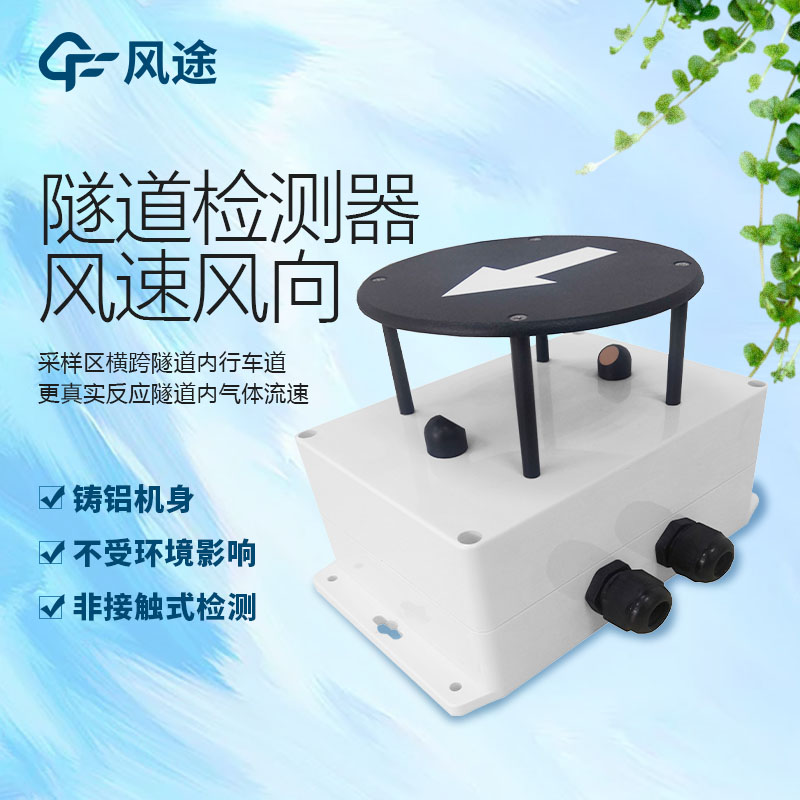Meteorological environment monitoring equipment supplier
Insist on doing high-precision customer favorite technology products
Tunnels are artificially dug or constructed underground passages, which are commonly used in transportation, energy, water conservancy and other fields. Wind is an important factor in the entire cycle of tunnel construction, operation and maintenance. The air flow and wind speed inside the tunnel not only have an important impact on the safety, comfort and practicability of the tunnel, but also have an impact on the pollution diffusion and thermodynamic effect. Therefore, it is important to measure the wind speed in the tunnel.
Tunnel anemometer is an instrument used to measure the wind speed inside a tunnel. Analysis, recording and transmission of wind speed data are used to evaluate tunnel conditions such as air flow, temperature and pressure to better manage and optimize tunnel design and operations. Anemometers usually use different principles such as ultrasound to detect the speed and direction of air flow.
Specifically, the role of tunnel anemometer includes the following aspects:
1. Safety assessment: The safety of tunnels is one of the key issues in construction, operation and maintenance. To ensure that the tunnel air flow, temperature and air pressure parameters in good condition to ensure the safety of staff and other tunnel users.
2. Tunnel design: In the process of tunnel design, the ventilation speed needs to be considered to fully consider the airflow conditions under different circumstances, such as fire and pollution.
3. Tunnel operation: The airflow status in the tunnel is very important for the subsequent management and maintenance of the tunnel. The use of anemometers also optimizes tunnel ventilation and temperature regulation, reducing energy consumption and maintenance costs.
Modern tunnel anemometers usually have the following characteristics:
High accuracy: Modern tunnel anemometers usually have high-precision measurement and analysis functions, which can provide accurate wind speed and meteorological parameter data.
Diversity: Tunnel anemometers are divided into many different types according to different working principles, including ultrasonic, hot wire, thermistor, etc., to adapt to different environments and application scenarios.
Long life: Because the tunnel environment is very complex and harsh, the durability and stability of modern tunnel anemometer have been greatly improved, and the service life is relatively extended.
When purchasing a tunnel anemometer, you need to consider the following key points:
Measurement accuracy: The measurement accuracy of tunnel anemometer is very important, which can directly affect the subsequent work and application. Therefore, instruments that can achieve a high degree of accuracy should be selected in the selection.
Working environment: there may be different pollutants and physical conditions in the tunnel air flow, so special attention needs to be paid to whether the anemometer can fully adapt to these harsh working conditions.
Data transmission and management: Today, many tunnels are equipped with automated control and monitoring systems, so the data transmission and management of tunnel anemometers is also very important. Modern tunnel anemometers can often be transmitted wirelessly or interoperable with other systems via wired connections.
In short, tunnel anemometer is an essential instrument for the construction, operation and maintenance of tunnels. Through accurate measurement and analysis of data, it can effectively manage and optimize the tunnel environment, improve the efficiency of tunnel use, and ensure the safety and convenience of people.
